Media | Articles
The story of the modern Challenger, from 2008 to the present day
Since its debut in 2008, the current Dodge Challenger has been the purest and most abiding of the modern muscle cars.
Consider the competition: The updated Chevrolet Camaro arrived later (in 2010) and is already rumored to be on the way out. The Ford Mustang, all-new in 2005, received another stem-to-stern overhaul in 2015. The Chevrolet Corvette, which competes with high-end Challengers, is working on its third iteration (C6, C7, and C8) in less than a decade.
The Challenger hasn’t exactly been stuck in Park since its launch. In addition to a dizzying array of throwback colors and nostalgic graphics packages, the car has been sold in so many specific models that you need a cheat sheet to keep them all straight—R/T Shaker, Rallye Redline, Scat Pack, Hellcat, Redeye and a one-year-only Demon equipped with a supercharged Hemi capable of making 840 mind-blowing horsepower, to name just a few.
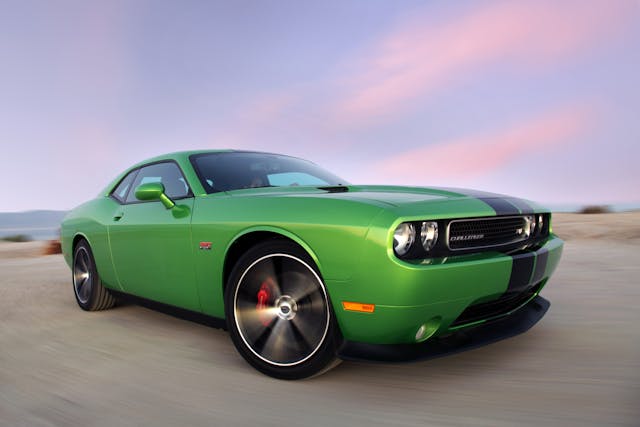
But today’s Challenger still rides on the same platform underpinning the original car, and it still embodies the same timeless verities. It’s not exotic. It’s not complicated. It’s a big, brawny coupe clothed in brazenly retro bodywork, and it offers a perfectly calibrated combination of everyday practicality and badass straight-line performance. What’s not to like?
“We solved this equation back in the ’60s,” says Dodge CEO Tim Kuniskis, who sold a big-block ’71 Challenger R/T he’d lovingly restored himself to finance the purchase of a Demon. “Take a mainstream car, put more horsepower in it, put more tire underneath it, put in more brakes to stop it, and bingo! People went, ‘Yep, that’s it. That’s just what I want. Make it louder. Make it bolder. Make it faster. I want THAT.’ As a result, we’re selling more Challengers now than we sold when the car was invented.”
Marketplace
Buy and sell classics with confidence
Historians can haggle for hours over when the muscle car era officially began. Was it with the Oldsmobile Rocket 88 in 1949? The Chrysler 300 in 1955? The Rambler Rebel? The Ramcharger Dart? The Ford Thunderbolt? The year everybody can agree on is 1964, when Pontiac mated a 389-cubic-inch V-8 with a mid-sized Tempest coupe and spawned a game-changer called the GTO.
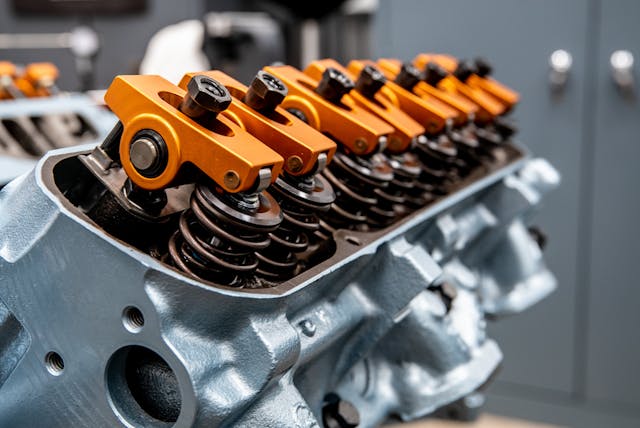
Chrysler was a major player early on with 426 Hemis powering bad boys such as the Dodge Charger and Plymouth Road Runner. In 1970, Mopar brass doubled down in the emerging pony car segment by reimagining the Plymouth Barracuda and inventing the Dodge Challenger. The cars were great. The timing wasn’t. The oil embargo of 1973, emissions controls, and skyrocketing insurance rates kneecapped the muscle car market, and the Challenger disappeared after the 1974 model year.
Chrysler went from bad to worse during the rest of the decade, ultimately requiring a federal bailout in 1980, and when it returned to profitability, it was with an underwhelming roster of prosaic K-cars and minivans. Adding insult to injury, the Challenger nameplate was resurrected in 1978 with a sad badge-engineered Mitsubishi, but the car was euthanized in 1984.
The brand began reestablishing its credibility in the high-performance space with the Dodge Viper, which debuted in 1992 and scored the first of three consecutive class wins at Le Mans in 1998. The third-generation Hemi V-8 went on sale in 2003, and before long, the SRT (for Street and Racing Technology) posse was producing wicked hot-rod versions of 300Cs, Magnums, Crossfires, Neons, and even Jeeps and Ram pickups.
By 2005, DaimlerChryser was ready to build a vehicle that channeled the brand’s baby boomer high-performance heritage. The exterior styling was the work principally of Michael Castiglione, a designer at the West Coast Pacifica Studio in Carlsbad, California. “During the development of the concept car, we brought an actual 1970 Challenger into the studio,” he says. “For me, that car symbolizes the most passionate era of automotive design.”

Resplendent in Orange Pearl, the Challenger concept car debuted at the North American International Automobile Show in Detroit in 2006. Gazing at the car, onlookers familiar with their muscle car history knew immediately that they were beholding the reincarnation of the classic Challenger. What they didn’t realize was how much bigger the new car was than the old one. (Seen together, the two models look more like father and son than big brother and little brother.)
The reason was that new production car had to be built on the existing LX platform, which was the foundation of the much larger 300 and Magnum. Essentially, the chassis of the Challenger is a Charger with two fewer doors and the wheelbase whittled down by four inches. With the hard points fixed, the design team ended up with a car that was considerably longer and wider than the original Challenger—and a whopping 1400 pounds heavier.

On the other hand, the makeover gave Castiglione a chance to improve some of the flaws in the ’70 Challenger’s exterior styling, such as the awkward fit of the skinny tires inside the wheel wells and the excessive front overhang. But he had to do it without losing the long hood, the short rear deck, the signature grille with the floating quad headlights and the wide-hipped rear haunches that gave the original car its signature swagger.
The magic is in the details. The side-view mirrors were shifted backward and the windshield raked to make the hood seem longer, for example, and the sills were blacked out to disguise the heft of the body. Instead of focusing on the differences between old and new, eyes gravitate to similarities such as the elegant C-pillar and the nose-to-tail body creases.
“We didn’t have to throw the kitchen sink at the design because the lines and proportions are timeless,” says Mark Trostle, the chief of Mopar Design, who’s been working on the Challenger since 2010. “We’ve modernized the design, pulling in new technology, but the basic lines harken back to the original.”
The concept car was such a monstrous hit that DaimlerChrysler was compelled to put it into production. Although the goal was to strike while the iron was hot and get the Challenger into showrooms in 2008, it was too late in the game for a full model run. So the company made the ballsy—and, as it turns out, genius—decision to make the high-performance SRT8 version the only model offered that first year.
This meant that none of the 2008 Challengers would be equipped with the V-6 engine that would power base models in years to come. Instead, every car packed a honking 6.1-liter Hemi that showcased the muscle-car bloodlines. Truth be told, the modern engine had nothing in common with the old one other than the name, and there are legitimate questions about whether the shape of the combustion chamber justifies the HEMI (trademarked!) moniker. But there’s no doubt that it delivered the goods.
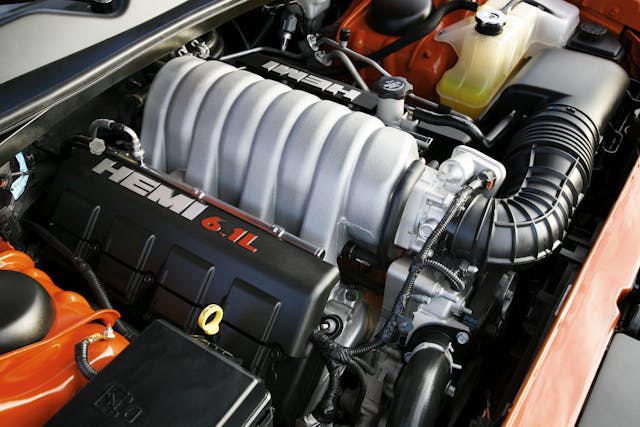
With a billet-steel crank and flat-top pistons cooled by oil squirters, the Gen III pushrod V-8 made 425 horsepower at 6000 rpm and 420 lb-ft of torque at 4800 rpm. Mated to a five-speed automatic—the only option that first year—the powertrain was good for 0–60 in 4.7 second and rumbled through the quarter mile in 13.1 seconds at 108 mph in a Motor Trend track test. Top speed, limited by drag, was 168 mph.

In SRT8 trim, the car rode on 20-inch forged-aluminum wheels stopped by four-piston Brembos. Like the Charger, the Challenger benefited from suspension components and geometry developed by Mercedes-Benz—a control-arm system from the S-Class at the front and a five-link arrangement from the E-Class at the rear. But the rear springs were stiffened to accommodate the shorter wheelbase, and the shocks were tuned for a softer ride to broaden the car’s appeal. Even so, the car managed a creditable 0.86 gs in cornering tests.
“It met all our functional objectives for sound, speed, braking distance, acceleration, figure-8 time, skidpad gs and lap time, but since it was going to be the only Challenger, it was a little less aggressive than I would have wanted,” says Erich Heuschele, who was an accomplished road racer before becoming manager of vehicle dynamics at SRT. “It didn’t ride quite as nicely as a 300C SRT8, but it was certainly plusher-riding than the Charger.”
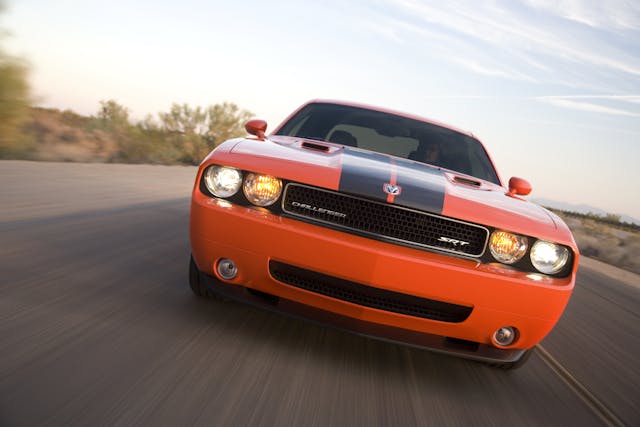
Early reviews were stellar. “The structure is Diebold solid, the steering cuts like a Mayo surgeon, the ride comes with discipline rather than abuse, and the sounds whisper of capability in waiting,” Patrick Bedard wrote in a Car and Driver comparison that rated the Challenger ahead of a Mustang in top-of-the-line Bullitt trim. Priced at a tick over $40,000, the Challenger flew out the door; all 6400 units were sold even before they reached dealers.
The full model lineup was introduced in 2009. At the bottom of the totem pole was the SE, which came with a venerable 3.5-liter V-6 making 250 horsepower and 250 lb-ft of torque. Moving up to the mid-level R/T got you a smaller, older version of the Hemi in the SRT8. (Displacing 5.7 liters, it produced 375 horsepower and 404 lb-ft of torque.) A six-speed Tremec manual was now available as an option—with a pistol grip so owners could indulge their Vanishing Point fantasies.

Like any other car, the Challenger can be accessorized with leather this and power that. But from the beginning, it was also offered in a mind-boggling variety of arresting heritage colors (Plum Crazy, Top Banana, Toxic Orange) and special editions (Rallye Redline, R/T Scat Pack 1320, 392 Yellow Jacket). The idea was to make customers think they were getting a customized, one-of-a-kind car.
“The build complexity is out of control,” Kuniskis says. “That’s the worst thing you want from a business standpoint. But the customers absolutely love it. I can’t tell you how many emails I get from customers saying, ‘Hey, can you please build me a green one with red seat belts?’ I’m like, ‘I thought we thought of every combination known to man, but we didn’t think of that one.’”
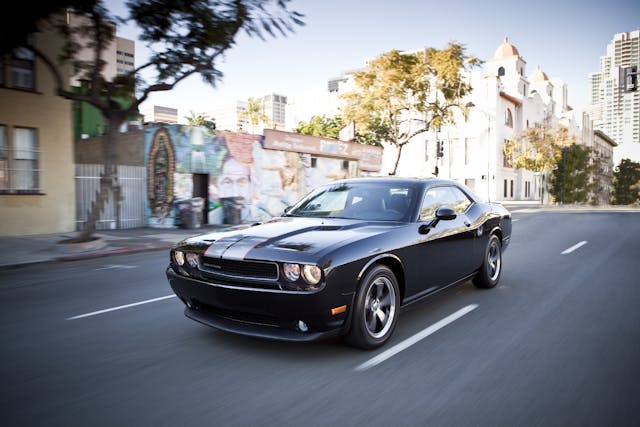
The 2011 model year brought two new engines. At the bottom end was a clean-sheet twin-cam 3.6-liter Pentastar V-6 rated at 305 horsepower and 268 lb-ft of torque, which wasn’t shabby. But SRT models got a punched-out 6.4-liter Hemi dubbed the 392 in honor of the iconic engines of the late ’50s. (Technically, though, the 6.4 displaced only 391 cubic inches.) The new motor developed 470 to 485 horsepower and 470 to 475 lb-ft of torque.
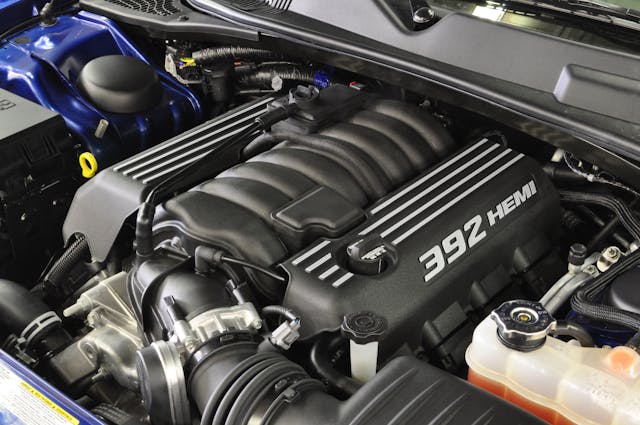
There were several upgrades over the next few years. Adaptive electronic shocks were introduced in 2012, while 2014 resurrected the old-school “shaker” hood scoop and the storied Scat Pack badge. But by 2015, the car was getting long in the tooth. In the blogosphere, haters complained that it was too big and clumsy. It was time, critics said, for a reboot.
“We looked at a new platform,” Kuniskis admits. “It was going to be smaller. It was going to be lighter. It was going to handle better. But when we talked to people who bought the car, they said, ‘I considered your car over the competition because it was bigger, because it was heavier, because I drive it every day, because I need the back seat, because I need the trunk. And, oh, by the way, I like the fact that it’s more muscle car-like and less sports car-like.’”
So Fiat Chrysler Automobiles (FCA)—which had been formed in the wake of Chrysler’s bankruptcy in 2009—decided to stick with the old LX platform. But the company couldn’t stand pat because the Challenger was getting spanked in the horsepower wars. The Mustang was being sold in 662-horsepower GT500 form, and the ZL1 version of the Camaro made 580 ponies. (The Corvette ZR1 made 638 horsepower.) It was very much a go-big-or-go-home moment.
“I remember discussions of what number the horsepower should start with, and it needed to be a 7,” Heuschele recalls. But there was an upper limit, too, based as much on marketing as technology. “We had to be careful because Ferrari was still in the [FCA] family, so there was always that internal dance of where the number was going to sit,” says Beth Paretta, who was running SRT at the time.

The team eventually settled on 707 horsepower and 650 lb-ft of torque. The secret sauce was augmenting a 6.2-liter version of the Gen III Hemi with a 2.4-liter IHI-built twin-screw supercharger that produced 11.6 pounds of boost. To accommodate the extra grunt, the so-called BGE (for Big Engine Casting) block incorporated thicker walls and higher nickel content. The aluminum pistons were forged rather than cast, and they were cooled by oil squirters. The codename that powertrain chief Bob Lee, a big warbird fan, had used for the engine was bestowed on the new model:
Hellcat.
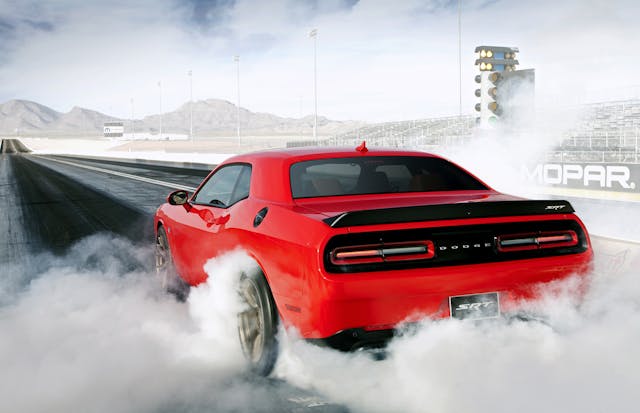
Extra power translated into more heat, which meant additional cooling was required. The inner driver-side headlight housing was transformed into a covert air intake, while a pair of subtle heat extractors were carved into the hood. Like all 2015 models, the Challenger SRT Hellcat also benefited from an optional eight-speed ZF automatic and a slick new dual-opening grill echoing the Dodge pony car raced in Trans-Am in 1971. MSRP was a reasonable $64,000.
But most people focused on more outrageous numbers, not just horsepower and torque but also an official 0–60 time of 3.7 seconds, the quarter-mile in 11.2 seconds and a top speed of 199 mph. The whine of the supercharger rotors spinning at 14,160 and 23,160 rpm respectively left drivers delirious. “At full throttle,” Road & Track reported, “the Hellcat sounds so damned pissed-off that you might think there’s another behind you, one on either side, and maybe one above and below, too.”

By 2017, the Challenger was offered in 14 distinct trims, from the bare-bones SXT to the tick-all-the-boxes 392 Hemi Scat Pack Shaker. By this time Hellcat was old news, and the competition at Ford and GM hadn’t been standing still. Fortunately, Heuschele and fellow SRT engineer Jim Wilder had started working—unofficially—on a Hellcat upgrade in January 2015.
“We took a Sawzall to the fenders, put some big drag tires on it—they were 20s, at the time—and started messing around,” he says. “It was a bootleg engineering secret project that ended up being cool enough that [FCA executives] wanted to make a car out of it.”
The latest and greatest Challenger took shape as the Demon. The most obvious—and eye-popping—upgrade was under the hood. Although the new car shared the same basic 6.2-liter V-8 and cylinder head with the Hellcat, the engine—painted red instead of orange, like all previous Hemis—benefited from 25 upgraded components including pistons, rods and the cooling and fuel-injection systems. Oh, and it also got a larger 2.7-liter supercharger generating 14.5 pounds of boost.
Power output was staggering, hallucinatory and, completely ridiculous. Even jaded car journalists had a hard time wrapping their heads around 808 horsepower and 717 lb-ft of torque—figures that rose to 840 and 770 when the beast was fed with 100-octane race fuel. Equipped with a transbrake and bespoke street-legal 315/40R18 drag radials from Nitto, the car hurtled from 0 to 60 in 2.3 seconds, with the quarter-mile dispatched in 9.65 seconds at 140 mph—too fast, ironically, to compete in NHRA’s street car class. Even more impressively, the Demon was the first production car capable of popping a wheelie. SlashGear dubbed it “Hell on Wheels.”
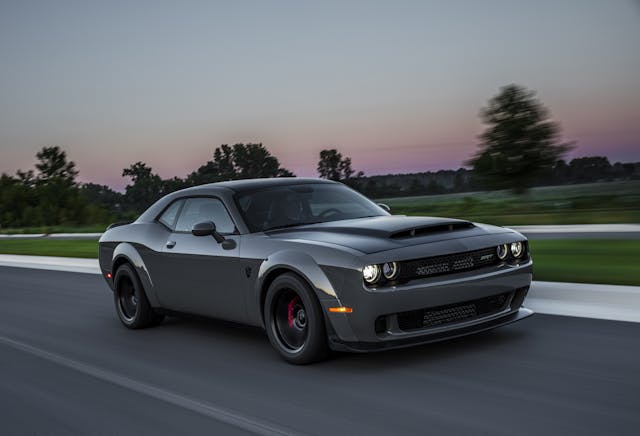
The car also looked the part. A menacing air scoop traversed nearly the entire hood, and a widebody treatment was needed to clear the big tires—elements that allowed the Demon to evoke what Trostle calls “the flavor of the old Super Stock cars of the ’60s.” But despite the devilish looks, the Demon was an angel on the street. “It runs killer skid pad times, and the braking distances are just insane,” Heuschele says. “But it ends up being the nicest car to drive around on the road because it’s sprung nice and soft, and it’s got big, boomy tires that absorb a lot of stuff.”
To save more than 100 pounds, Challenger SRT Demons were sold without passenger or rear seats, though both were available for $1 apiece. Another $1 option was the “Demon Crate,” which included various Snap-on tools, skinny front drag tires and the components needed to mod the car to unlock all 840 ponies after putting it on a 100-octane diet. With prices starting at $85,000, all 3300 units flew out the door like bats out of hell before they were even built, rendering the one-year-only model an instant collectible.
The hits kept coming. In 2019, FCA released the Challenger SRT Hellcat Redeye, which fitted the standard Hellcat with the Demon engine detuned to a “mere” 797 horses because the gigantic hood intake gave way to two smaller nostrils. The next year brought the Challenger SRT Super Stock—a Redeye with a 100-rpm-higher redline, which boosted the power output to 807 horsepower.
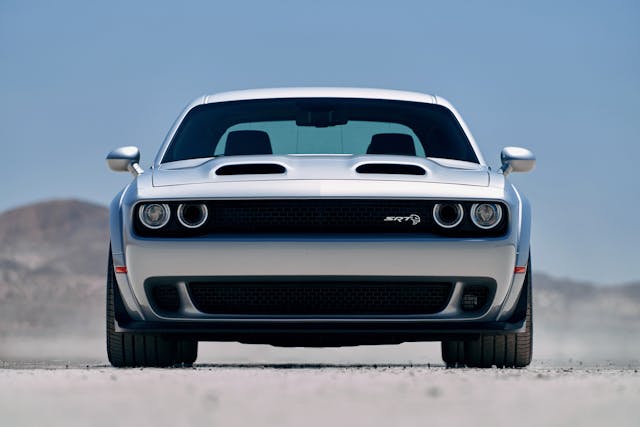
For 2021, 10 distinct Challengers are available, plus an ungodly selection of equipment and appearance packages. All-wheel drive is available in lower-level models while high-line cars can be ordered with Widebody sheetmetal. Prices range from about $28,000 for the bare-bones SE to $81,000-plus for the Super Stock. In other words, something for just about every muscle car junkie on the planet, whether a working stiff shopping for a daily driver with some attitude or a rich dude looking for another toy to park in his garage mahal.
If price is no object, the Demon is the Challenger to buy and hold, with occasional expeditions to your local drag strip. For around town and long-haul driving, the “standard” Hellcat will do the job with a remarkable blend of speed and comfort. Prefer a track-day weapon? A T/A 392 Widebody with the six-speed Tremec manual, adaptive damping, 20-inch wheels and six-caliper front calipers will eviscerate most of the competition.
Okay, sure, it won’t hang with a Shelby GT350 or a Camaro SS 1LE, but that’s not the point. People don’t buy Challengers to set lap records or impress engineering geeks. They want a relatively affordable, straightforward, traditional muscle car that’s fast, loud and good-looking without sacrificing comfort or practicality. So while Ford applies the Mustang name to its latest electric crossover and GM is committed to an all-electric future, FCA continues to unveil more in-your-face Challengers, with more over-the-top names, in more outlandish colors.
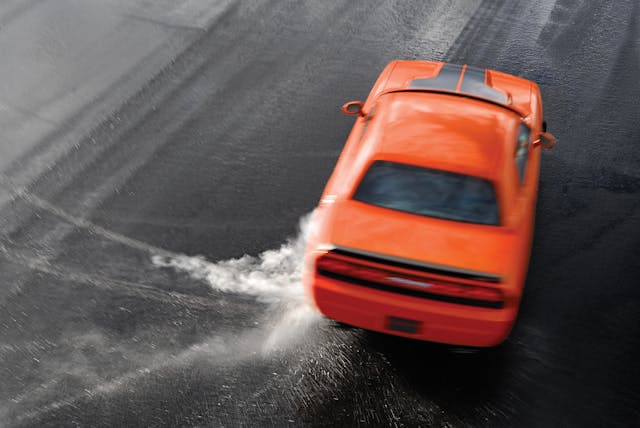
“As everything gets more politically correct and homogenized, we’re seeing a core group of people saying, ‘I want to have something I identify with. I want to have something that says, “I’m different.” I don’t want to fit in,’” Kuniskis says. “That’s the people who buy these cars.”
Call it embracing their inner Challenger.
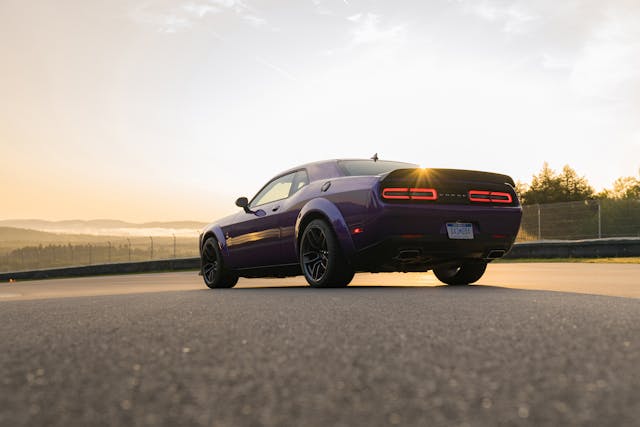
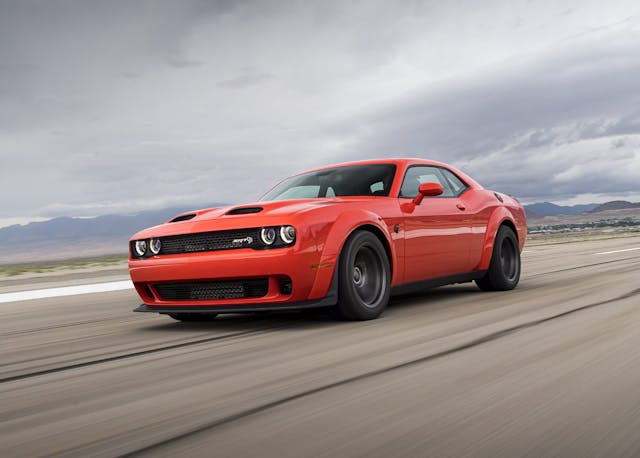








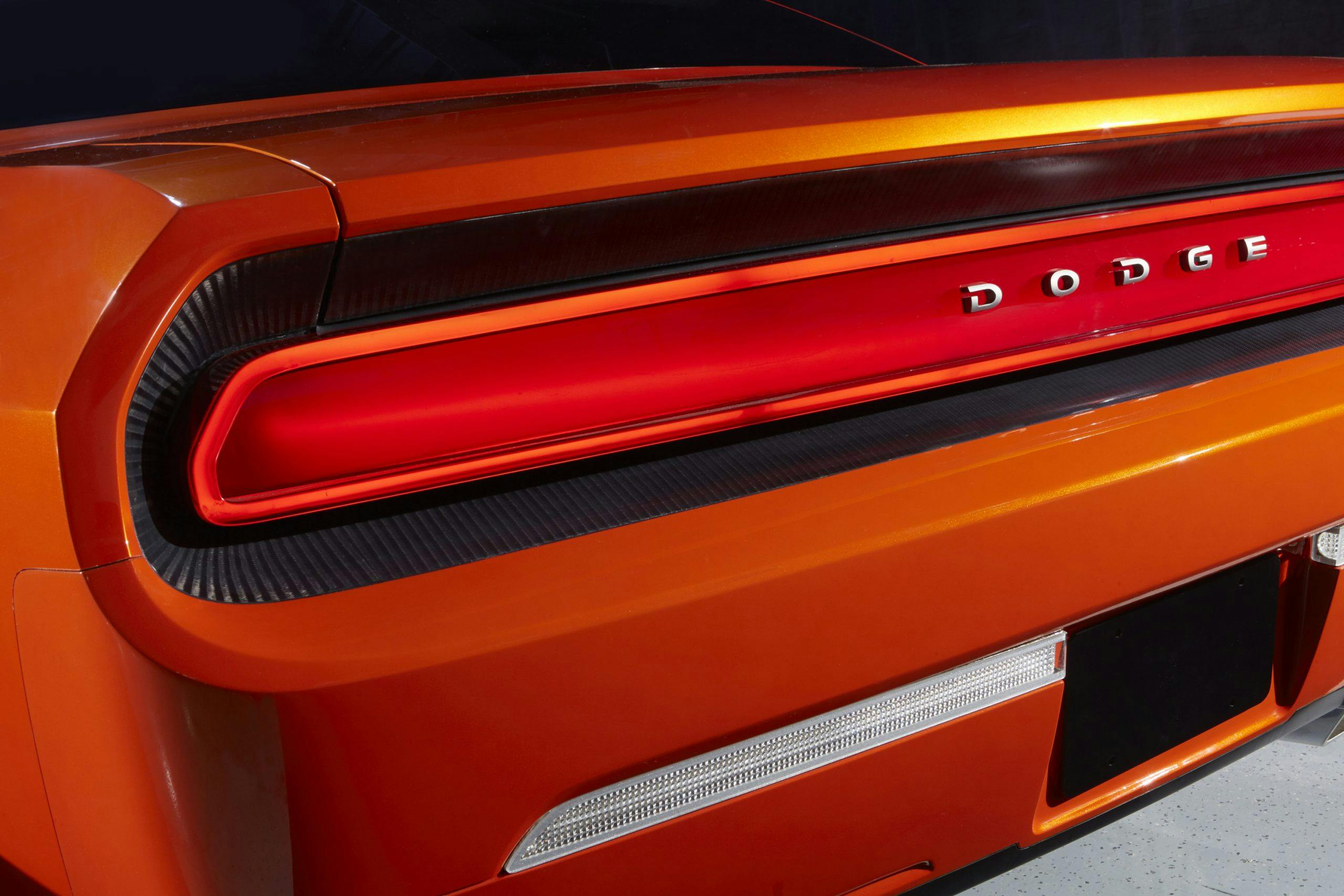




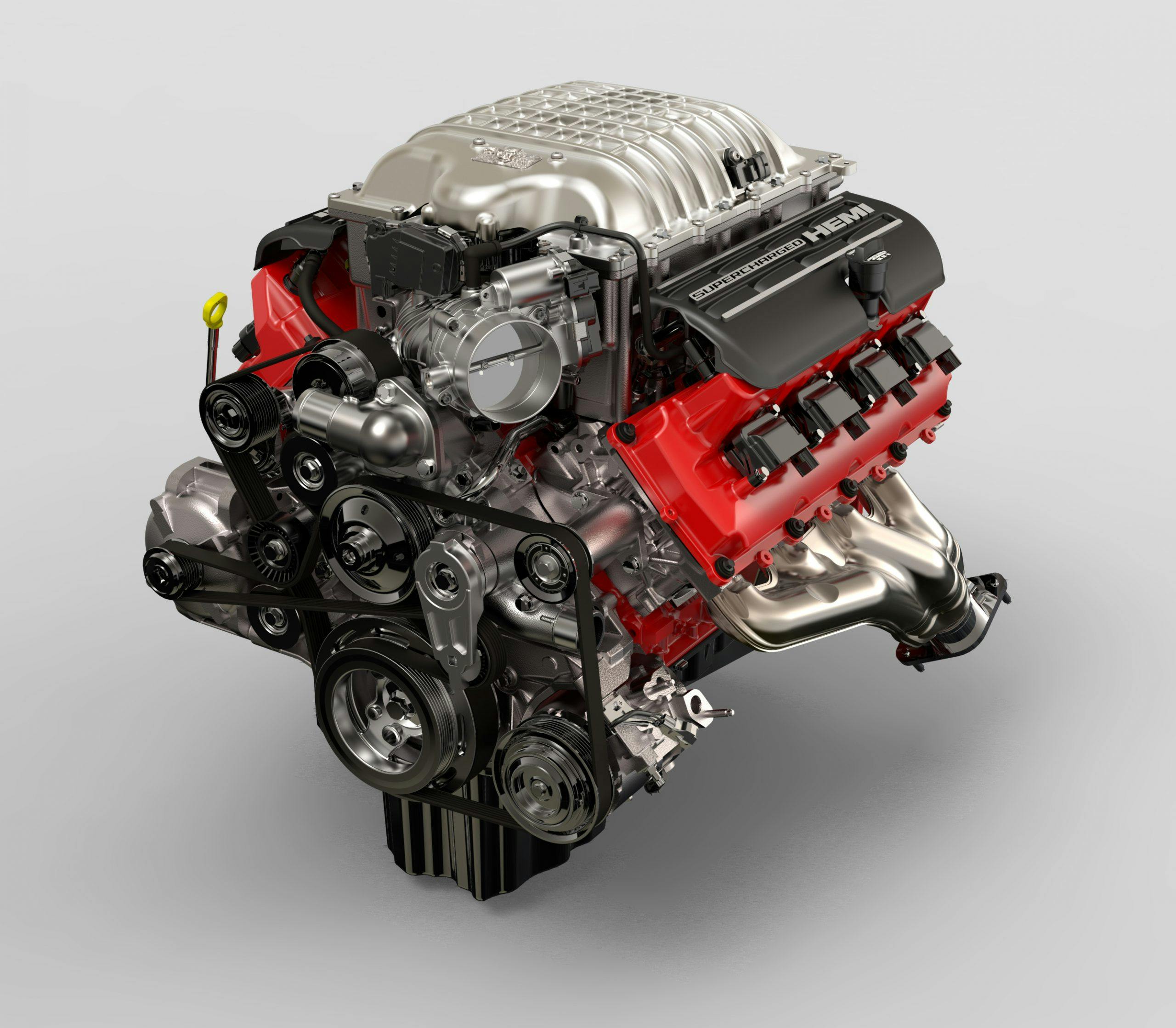







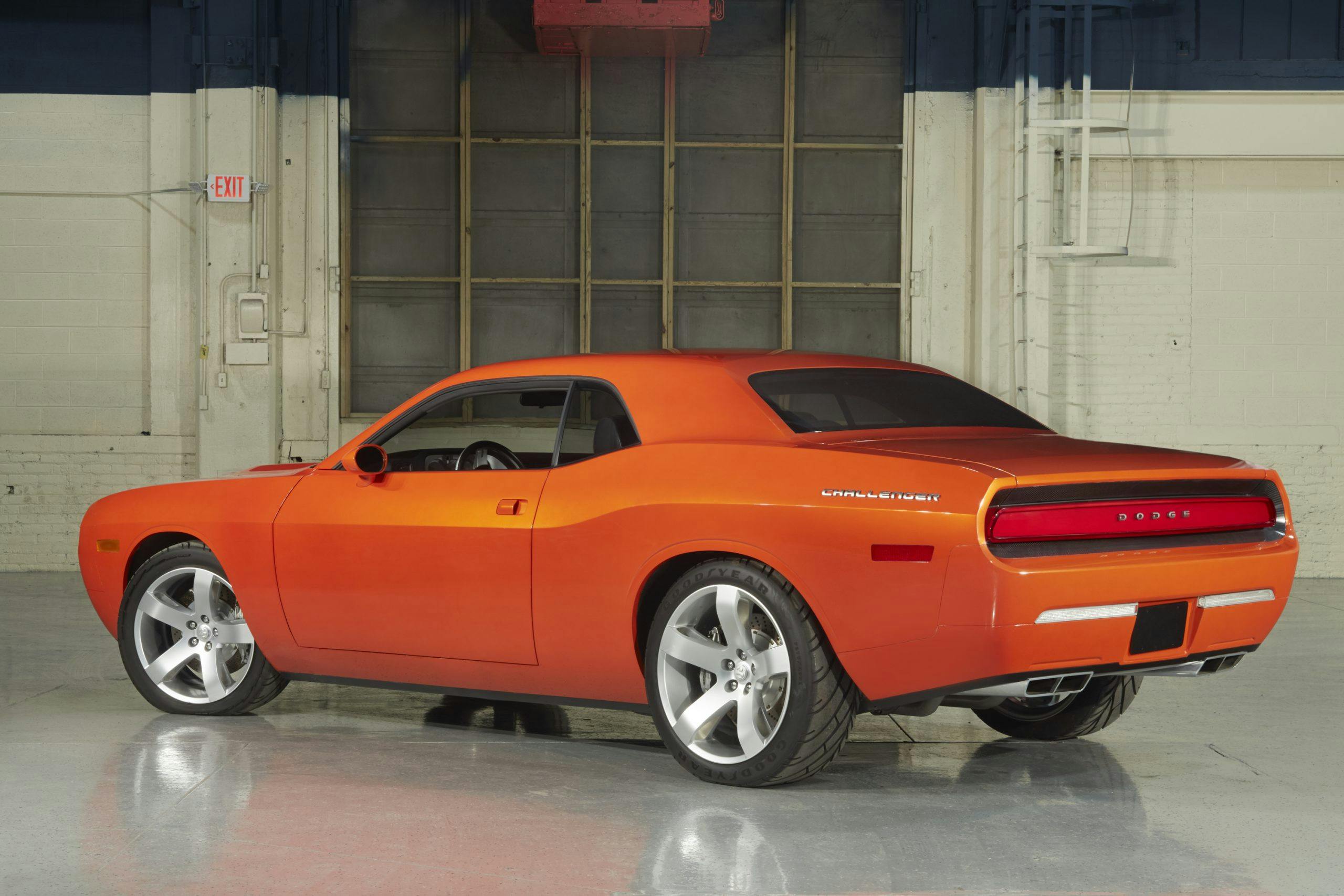



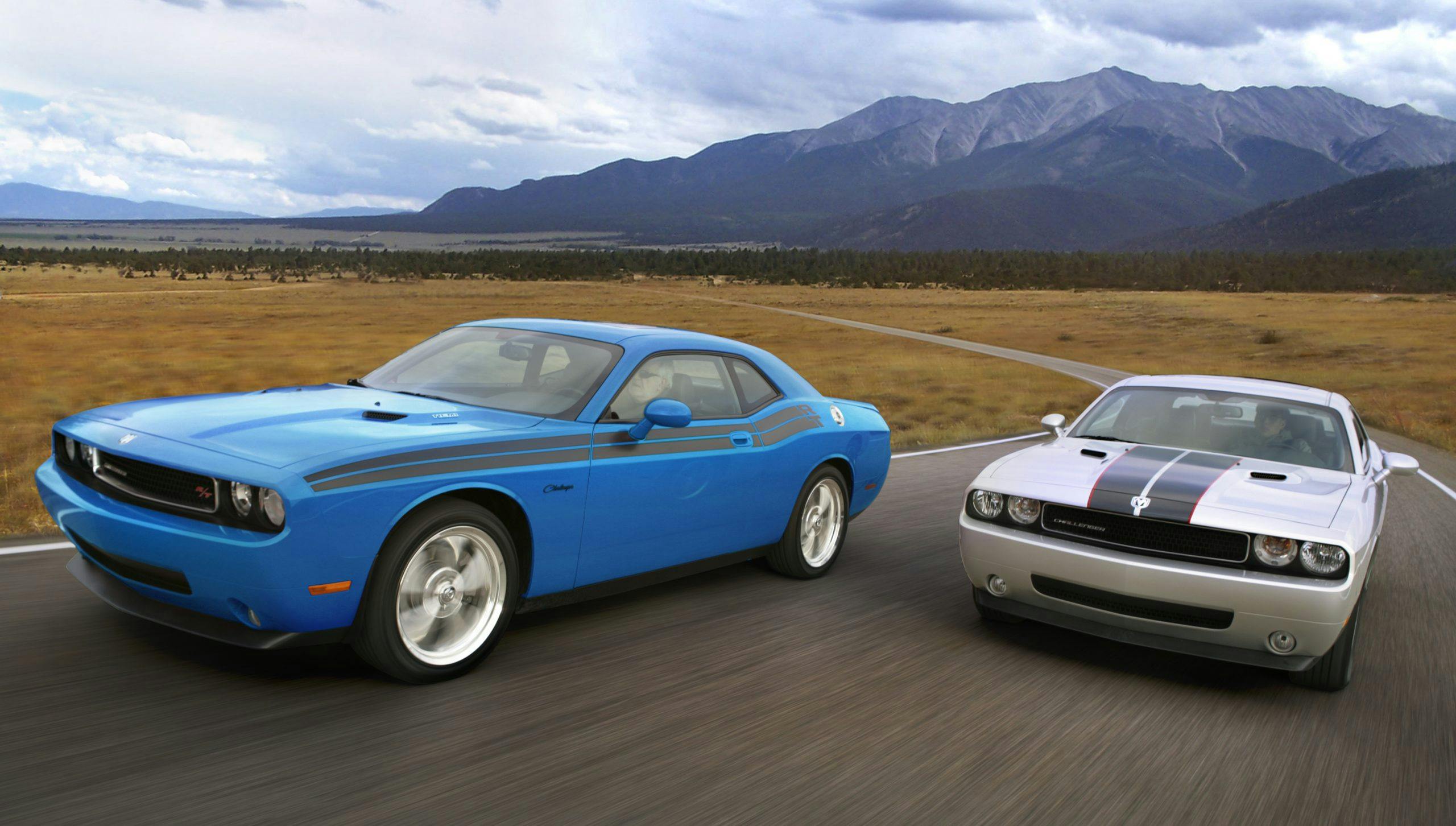












I love the Challenger: this platform as well as the 1970-74 platform. When it was discontinued in ’74 I never thought they would bring it back. Now it’s discontinued as of next year, probably never to come back. Sad, for the younger generations who still don’t know how cool muscle cars truly are!